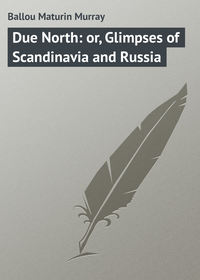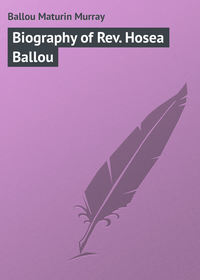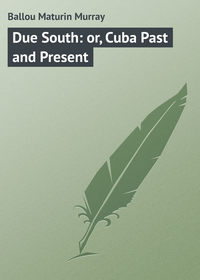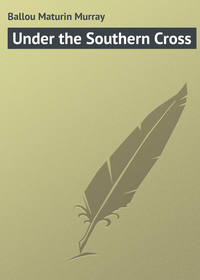 полная версия
полная версияThe Story of Malta
The Grand Master assembled the Knights to an extraordinary meeting. He bade them reconcile themselves with God and with each other, and then prepare to lay down their lives, if necessary, in defense of the faith which they had sworn to shield. All schisms were forgotten, as might naturally be expected. The order, in face of an enemy, was as one individual. After renewing their vows in the most solemn manner, they joined hands and hearts in the great purpose of defense, resolving to inflict dire destruction upon the common enemy. There was no more jealousy or rivalry between individuals of the order, except as to which should exhibit the greatest and most effective bravery upon the ramparts, or on the occasion of a sortie. This spirit of chivalrous emulation among the Knights cost the enemy daily many scores of lives.
Thus began one of the most sanguinary sieges ever recorded in history. It lasted for nearly four months, and was characterized by unrelenting desperation on both sides, reviving again the bloody scenes which were enacted at Jerusalem, Acre, and Rhodes. The thirty-five years which had transpired since the Knights took possession of Malta had been largely devoted to strengthening their means of defense, and in supplying their armory with the most effective death-dealing weapons. The present site of Valletta, it should be remembered, was then simply the bare promontory of Mount Sceberris.
The Grand Master knew every movement of the enemy, through the capable spies whom he maintained at Constantinople, and was promptly informed by them of the sailing of the expedition. The Christian forces, therefore, were in no wise taken by surprise, while the Turks were amazed at the ample preparation evinced in the manner their first onslaught was received, and the terrible slaughter of their forces, while the cheering battle-cry of the Knights of St. John rang ominously in their ears. They could not have hoped to take the Christians wholly unawares, but they had no idea that the Knights were so thoroughly prepared to receive them with stout arms, keen-edged weapons, and an abundance of death-dealing missiles. The invaders had brought siege artillery with them, and after the first assault, from which they had hoped to achieve so much, but in which they were tellingly repulsed, leaving hundreds of their best soldiers dead in the trenches and upon the open field, they resorted to their reserved means of offense. Some of their cannon were of such enormous calibre as to throw stones weighing three hundred pounds. Yet so clumsy was this primitive artillery, and so awkwardly was it served, that it often inflicted more destruction on the Turkish gunners themselves than on the Christians.
The struggle raged fiercely day by day, and the victims were reckoned by hundreds among the enemy every twenty-four hours. The carnage among the besiegers was awful. Their close ranks were mowed down by the Knights, as grass falls before the scythe of the husbandman.
When the Ottoman soldiers came in a body, bearing scaling-ladders wherewith to reach the top of the rampart of St. Elmo, and while they were in the most exposed situation, sharp-cornered stones, as heavy as two men could lift, were launched suddenly upon those ascending the ladders, forcing them to the ground, and killing them in large numbers. Boiling pitch was poured upon the upturned faces of the assailants, blinding and agonizing them. Iron hoops bound with cotton thoroughly saturated with gum and gunpowder were set on fire, and so thrown as to encircle the heads of three or four of the enemy, binding them together in a fiery circle which they could not extinguish, and which burned them fatally before they reached the ground below. Many other horribly destructive and fatal devices were adopted by the defenders, which spread death in all directions among the Turks. When one of the enemy succeeded in reaching the top of the ramparts, he was instantly met by a Knight, whose keen battle-axe severed his head from the body, both head and body tumbling back into the ditch among the assailants. Still, the indomitable Ottomans renewed their attacks from day to day, hoping to carry the fort at last by exhausting the physical endurance of the defenders, though it should cost ten Mussulmans' lives for one Christian. Each time they marched to the assault, the death-dealing rocks, the boiling pitch, and the fiery hoops did their terrible work, in connection with the ordinary weapons of war, in the use of which the Knights were so expert. It is said that in the hands of a powerful man familiar with it, no weapon is so destructive at close quarters as the broad-bladed, keen-edged battle-axe of those days. The Orientals depended almost solely upon their crude firearms, – the blunderbuss, – together with their light swords and spears.
Early in the siege of which we are speaking, the commander of the Mohammedan army resorted energetically to mining, in furtherance of their attack upon Fort St. Elmo, but the Knights were no novices at counter mining. On one occasion the Turkish engineers had sprung a device of this sort so near to the defensive bastions as to make a wide breach in the stout walls. This was not unexpected by the Knights, who had, in fact, been on the watch for just such an opportunity. Hardly had the shower of the débris ceased to fall, before the enemy rushed forward to enter the fort by the newly made breach. The turbaned throng, a thousand men and more, with waving banners and upraised swords, crowded together upon the spot, little heeding what was to follow. And yet there was a moment's pause, a moment of utter silence, as though those soldiers of the crescent instinctively waited for something to happen, they knew not what. It was like the awful stillness which precedes the hurricane at sea. The moment this pause occurred, the Knights sprung a well-prepared mine beneath the very feet of the densely crowded body of the enemy, blowing nearly two thirds of their immediate assailants to instant death! Seven hundred Turks are said to have lost their lives at that terribly fatal explosion, as though struck by lightning. The whole Ottoman force rapidly withdrew in utter confusion and amazement.
The moral effect of this frightful catastrophe to their army led to quiet in the Turkish camp for several days, though it did not fail to create among the invaders a spirit of revenge which amounted almost to madness.
Jean de La Vallette, Grand Master of the order, was well fitted for his position in this great emergency. He was seen everywhere, even in the thickest of the fight, praising the valor of the Knights and leading the most hardy. Though he was gray with age, being threescore years and ten, still his practiced arm was stout and able to wield the terrible battle-axe with dire effect. He had always been famous for his expertness with this weapon. He was the beau idéal of the soldier-monk, and the true embodiment of a spirit of chivalry which was fast passing away. At this special time his experience was of the greatest advantage, and his judgment was always sound. Having once been a captive among the Turks for a considerable period, he knew their mode of warfare, and spoke their language. Though stern and inflexible in character, and often charged with cruelty, he is represented to have been always just, and devoutly religious. To his skill, courage, and iron will, together with a spirit of tireless energy, more than aught else, the Ottomans owed their final defeat. His very name has become a synonym with the Maltese for genius, piety, and courage.
It is true that on the closing days of the siege, the Knights of St. John were joined by long-delayed reinforcements sent from Italy, but so far as we can discover, these fresh troops were not called upon to go into action with the enemy. The siege was virtually already at an end when they arrived upon the scene. The Turkish army had suffered beyond all precedent. Three quarters of their number had laid down their lives in this sanguinary and useless siege. The fort of St. Elmo had finally been captured by the enemy, but forts St. Angelo and St. Michael still remained intact. These forts were also stormed again and again, but the now weary and disheartened Ottomans were repulsed each time with awful slaughter. At last, when it became known that reinforcements sent to the Knights had actually landed upon another part of the island, Mustafa Pasha was compelled to order the galleys to prepare to sail for Constantinople with the small and shattered remnant of his army. Further prosecution of the siege was out of the question, and those of the Turkish army still left alive, struck by a panic, threw away their arms, and fled toward the galleys.
In this hasty and demoralized retreat of the enemy, the Knights saw their chance for an effective dash; so getting a few score of cavalry together, until now inoperative, they fell upon the rear of the fleeing Turks and slaughtered them in large numbers, while many were driven pellmell into the sea, where they were quickly drowned.
While the siege was in active progress, all Europe was anxiously watching the struggle, and when it closed with such decided results, and with the utter discomfiture of the Ottoman power, Europe rejoiced. In Rome (as well as in many other capitals), the ancient city was illumined, and salutes were fired from the fortress of St. Angelo, on the banks of the Tiber, while a thanksgiving mass was celebrated in all the churches. Pope Pius IV., as a special mark of his favor, offered La Vallette a cardinal's hat; but the hero of Malta considered his position far more elevated than that of a cardinal, and graciously declined the honor.
CHAPTER XVI
Result of the Siege. – Native Women serving as Soldiers. – The Maltese Militia. – The Knights gain World-Wide Applause. – Rage of Sultan Solyman. – Agents of the Grand Master become Incendiaries. – La Vallette, Hero of the Siege. – The Order still Piratical. – The Turks and Knights Affiliate. – Decadence of the Chivalric Brotherhood. – Momentary Revival of the Old Spirit. – Treacherous Surrender. – French Sovereignty. – End of the Order.
Many interesting considerations suggest themselves in connection with this remarkable siege. The lack of discipline which characterizes Oriental soldiery was an element constantly operating against the assailants. Had the siege opened on true engineering and military principles, such an enormous and well-armed number of Turkish fighters must have overwhelmed the Christians at the very outset. This, however, was not the case. The siege seems to have been a series of blunders on the part of the Ottomans from the beginning until the end, or at least until the arrival of Admiral Dragut, who took partial command and gave the operations the benefit of his great military experience. Henceforth something like order and system were evolved from the utter confusion which reigned supreme in the Turkish army.
The vast number of the Ottoman forces, compared with that of the defenders of Malta, only served to emphasize their final and utter defeat. True, there is a great difference between contending parties when one is fighting in the open, while the other is protected by well-constructed walls of stone, but the Turkish commander, though foolhardy, was not blind, and he must have taken that into consideration when he made his opening and reckless attack upon the stronghold of Fort St. Elmo. It is quite possible that excessive numbers may prove an element of disaster, under certain circumstances. This was exactly the case in the first onslaught of the Ottomans, who came to the attack almost in a solid body, – a mere reckless, over-confident mob, – relying upon their numbers rather than upon any appropriate tactics. In after assaults more discipline was adopted and observed. The forces were divided so as to attack various points simultaneously, while a heavy reserve was held well in hand to launch upon the point where any temporary success disclosed a weakness in the defenses. The enemy had learned a bitter lesson by experience; that vain, ill-conceived attack at the opening of the siege having cost them between three and four thousand of their best soldiers. The bodies of these men who were slain before the stout walls of St. Elmo lay unburied for days in the trenches and approaches to the fort, creating a terrible stench, which caused a fever to break out in the Turkish camp, nearly as fatal to them as the missiles and battle-axes of the Knights.
During the progress of the siege the Maltese women not only tended the sick and wounded, but constantly served refreshments to those who could not leave their posts of duty. They also transported the wounded upon stretchers to the hospitals, and brought powder, shot, and rocks, to aid the defenders upon the ramparts. Though many of them were killed and others wounded while thus engaged, they bravely continued their important services to the last. One historian says that twice when the Turkish shot had cut down the red banner of St. John, with its eight-pointed cross of white, it was a Maltese woman who instantly rushed to the exposed point and raised it again over the ramparts, where stout and ready hands once more secured it in position.
It is a notable circumstance that the native population, though so clearly Arabic in their origin, manners, and customs, have never, so far as we know, sympathized with the Mohammedans.
Further details of this memorable siege would but weary the reader. Suffice it to say that the final defeat of the Turks showed them to have lost, since they had landed in Malta, thirty thousand men killed, besides hordes of wounded left unfit for future service. Of the Knights and their auxiliaries, who aggregated, as will be remembered, about nine thousand fighting men, only six hundred remained capable of bearing arms! The Maltese militia, so say contemporary writers, proved to be effective soldiers, numbering about three thousand men at the beginning of the conflict, but they were nearly all destroyed during the protracted siege. They were amphibious fighters, sometimes leaping into the sea, holding their swords in their teeth, and successfully attacking the Turks from this element in which they were so much at home. They aided most materially in the general result, and indeed, but for their gallant services, the Knights could not have held out to the close, when the reinforcements arrived.
This decisive victory gained over the Ottoman power was not alone of great significance to the Order of St. John, but it was of immense importance to all the dwellers in the Mediterranean ports west of the Levant, relieving the several exposed nationalities from the fear of predatory visits of Turkish or Algerine galleys. These notorious corsairs had for centuries made the great inland sea the terror of all honest seamen, seriously crippling its commerce. But at the siege of St. Elmo the most daring leader of the pirates had lost his life, and his followers were no more to be feared, at least for a considerable period. By their brave and successful defense of Malta, the Knights permanently fixed the boundary of the Ottoman power, so far as regarded its possible extension westward. Up to this time, Solyman II., like his father, called the "Magnificent," had his eyes fixed on Europe, the eventual conquest of which they both boldly resolved upon, but the tide of successful warfare in that direction was now stayed. Advance upon the Christian powers was quite impossible, while there remained upon their flank and rear so efficient and implacable an enemy as the Knights of Malta.
The admiration and gratitude of the Christian world at large were manifested by liberal donations from all quarters to swell the depleted treasury of the order, while earnest and able aspirants hastened to join its ranks. The Knights, by their display of indomitable courage and prowess in war, justly won the name of the heroes of Christendom. They were men, as we have seen, of whose morality the less said the better, but who as soldiers merited their unrivaled reputation.
The rage of Sultan Solyman at the complete defeat of his army and the return of his unsuccessful general was terrible. He immediately resolved to gather another army and flotilla, with which to conquer Malta, to lead this expedition himself, and to take with him a hundred thousand soldiers to insure victory. Preparations were accordingly begun in the great arsenal of Constantinople by collecting arms and ammunition for the carrying out of this purpose, especially including the storage of large quantities of gunpowder. When this had progressed for a few months, La Vallette was informed of the object by his well-paid spies in the Turkish capital. The Knights could not withstand another siege. Their ranks had been so thinned as to leave only a skeleton organization, and the outlook for them was indeed desperate. The Grand Master knew that he could no longer hope to oppose force to force successfully, and that other and effective means must be promptly adopted to cripple and discourage the persistent enemy. La Vallette secretly instructed his unscrupulous spies to fire the arsenal of Constantinople, promising a grand premium if success followed the attempt. This was done. Large stores of powder had already been gathered here for the expedition; and its explosion destroyed not only the arsenal itself, with its store of arms and equipments, but also wrecked the entire fleet, which was being equipped close at hand. The instant destruction of human life, as well as of war materials, was enormous, so great, in fact, that the expedition was necessarily abandoned for the time being. The death of the Sultan of Turkey soon followed the blowing up of the arsenal, thus preventing any renewal of the design against the order.
The successful defense of Malta proved to be the last great feat of arms achieved by the Knights of St. John. They had completely broken the Ottoman power, so far as aggressive operations were concerned. There was now no active enemy with whom they were called upon to contend. Rest and recuperation would seem to be absolutely necessary after the terrible strain which had been put upon their endurance; and they had most certainly earned the right to enjoy such a respite. Of the Grand Master, La Vallette, it is recorded that, during the heat of action, when the Turks were storming the walls and his battle-axe was spreading death right and left, his associate Knights besought him not to so expose his life. It was then that he replied: "How can I, at my age of seventy-one years, die more gloriously than in the midst of my brothers, in the service of God, and in defense of our holy religion?" He was the soldier-monk par excellence, possessing grand physical powers, devoutly pious according to his creed, and a grand example of chivalry. It is not too much to say that it was his hand that hurled back the shattered and riven power of the Turks. Age had not withered his ambition or enterprise. He resolved to build at once a new and thoroughly fortified city by the shore, on the promontory of Mount Sceberris, the present site of Valletta, and to remove the capital of the island to the coast. The outcome of this purpose is the beautiful city which we have already described, in the erection and fortification of which the order reached the acme of its defensive purposes. It may be truly said that they were at last fully prepared and able to repulse any force which could possibly be brought against them, and the universal knowledge that this was so prevented any further attempt at molestation.
The galleys of the Knights of St. John still roamed the seas in search of prizes, and woe betide any craft which they encountered sailing under the Turkish flag. It is said that a careful discrimination was not always exercised as to the nationality of the vessels which they attacked. Other craft than Turkish were often seized and pilfered, under some specious pretext, especially if they were Grecian. The galleys of that people, it must be frankly admitted, were mostly of a piratical character.
The rapidity with which the Knights recovered from their late almost hopeless condition was marvelous. A large and thoroughly fortified city seemed to spring into existence as though by magic. To accomplish this, vast sums of money were required, and the principal sovereigns of Europe vied with each other in their gratitude, as to which should most liberally contribute means for the use of the order in Malta. The Valletta of our day, however, was not actually completed until some twenty-five years later.
While Emmanuel Pinto was Grand Master of the order, in 1741, the King of Sicily attempted to establish a claim upon these islands, and sent a select council to preside over its government. These officials, who came hither in great state, were summarily dismissed and sent back to Sicily by the Grand Master. The king in retaliation closed all the ports of Sicily against Maltese vessels. This was a serious matter to the latter, as the group depended upon that country for a large portion of its food supply, especially in grain. To meet this exigency, the Grand Master entered into a treaty with the old foes of the order, namely, the Turks, who gladly accepted a proposal which afforded them a respite from warfare with so active an enemy, and also enabled them, for the time being, to sell supplies to the people of the Maltese group. They joined the Knights also in an offensive marine warfare against the Sicilians, and soon caused the king of that country to regret the step he had taken against the Knights of St. John. After he had lost many vessels to the Knights and Turks combined, he humbly sued for peace, and made such ample reparation as was demanded of him for the needless war which he had caused.
Looking at the current of events from our own standpoint, and through the distance of time, it would seem that the Knights must have found it a rather uncongenial business to fight a so-called Christian power, side by side with their life-long enemies, the infidel Turks. True, it was but a temporary union, the object of which having been accomplished, the old spirit of enmity between the Knights and the Ottomans was resumed, and found expression in an immediate renewal of hostilities.
From this period the glory of the Knights of St. John seems to have gradually waned. Their religious zeal and simplicity of living had long since departed. Is not all growth toward ripeness also toward decay, unless directed heavenward? There was no longer any violent opposition to overcome by energetic action and self-abnegation, no enemy with arms in his hands whom they must conquer. The one power whom they had always antagonized was comparatively exhausted and undemonstrative. True manhood feeds upon – is supported by – antagonism, and opposition is the spur to heroic deeds. The life of constant warfare and the savage use of arms which the Knights had so long been accustomed to quite over-shadowed their priestly instincts, and as peace now reigned, they sought unholy excitement in various forms, such as were ill-suited to the vows and professions of the order. They now dwelt in sumptuous palaces, lapsing by degrees into utter idleness and libertinism. They had become the richest and most powerful brotherhood in the world. It is true that the outward forms of their religion were observed with more or less regularity, but it was an empty, heartless ceremony. The portraits, still extant, which were painted of them at this period, show that their dress was changed from steel armor and shirt of mail to velvet and gold-wrought fabric, of an effeminate character. Their chivalric impulses had departed. They gave way to the pleasures of the table and to the demoralizing wine-cup. Those who have written of the order understandingly as regards this period tell us that morality was at the lowest ebb with the individual members of the fraternity. In these latter years, joining the organization was the means of providing for a younger brother in titled European families. The order became the resort for libertines who had exhausted all home relations. It was not unusual for men, however dissolute, provided they belonged to the higher ranks, to become Knights of St. John as a final resort, after leading a godless and criminal career.
An instance which occurred so late as 1783 is called to mind, when the Knights, for a brief period, seemed to awaken to the old instincts and professions of their order. It was tidings of the fearfully destructive earthquake in Sicily, happening in that year, which so aroused the fraternity. Manning their galleys, after they had filled them with food, wine, and medicine, they sailed across the sea, and having landed amid widespread desolation, they assumed the rôle of good Samaritans, feeding the hungry, ministering to the sick, and smoothing the pillow of the dying. Thus they once more revived the memory of those grand, unselfish days at Jerusalem, when they were justly renowned and revered as Hospitallers, living up to their vows of poverty, charity, and chastity. This was, however, only the blazing up of dying embers, and the order lapsed once more into luxury and decay.









